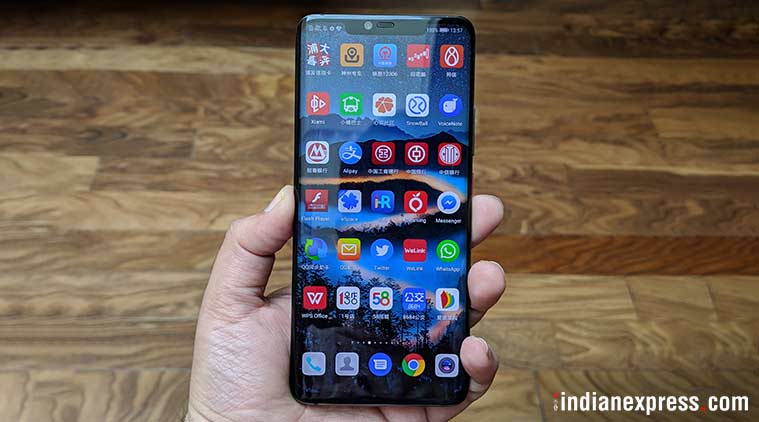 Huawei, the world’s second-largest smartphone maker, will launch a 5G-ready smartphone next year.
Huawei, the world’s second-largest smartphone maker, will launch a 5G-ready smartphone next year.
Huawei plans to launch more smartphones with the Kirin 980 chipset later this year as it aims to broaden the appeal of its artificial intelligence (AI) processor, currently limited to the flagship Mate 20 series. In an interview with indianexpress.com, Gene Jiao, Huawei’s President of Consumer Group, Middle East and Africa, said the company does not want the Kirin 980 chipset to be limited to the Mate 20 series. Instead, it wants to bring the same experiences and features to other phones as well.
“Definitely, there will be more phones with the Kirin 980 chipset later this year. We are working very hard to lower the cost of premium things to make them mass market,” he said. Jiao did not reveal the name of the devices, but did mention that they will launch this year. The Kirin 980 will also power Magic 2, the upcoming slider-phone from Huawei’s sister brand Honor.
With the Kirin 980 chipset, Huawei is directly challenging the dominance of Qualcomm and smartphone players like Apple and Samsung that use their own silicon in high-end smartphones. At this year’s IFA tech trade show in Berlin, Huawei became the first company to announce a seven-nanometer chipset. Apple soon followed with its own 7nm processor, the A12 Bionic which powers the iPhone XS, iPhone XS Max, and iPhone XR. Both Qualcomm and Samsung are expected to launch 7nm mobile processors, but devices will not become available till next year.
Huawei has been focusing on its own processors to win the mobile phone market. Many analysts see this as one of the reasons the company has been able to pip Apple as the second-largest smartphone maker in the world by market share. Out of all Android smartphone makers, only Samsung and Huawei have the capabilities to design their own silicon. Smartphones from Xiaomi, Oppo, HMD Global, and Vivo are either powered by Qualcomm or Mediatek processors.
Also read: Huawei Mate 20 Pro hands-on: Premium design, but can it take on iPhone XS Max?
In the coming months, Qualcomm will release its next-generation chipset, likely to called the Snapdragon 855. Most flagships from rival companies will be powered by the Snapdragon 855 processor. But Jiao isn’t worried about the competition. “We are not competing in this way…the big cannon doesn’t enable you to win the war,” he said. According to Jiao, the company will continue to invest in chipset design and the current priority is to focus on user experience more than anything else.
The competition between Qualcomm and Huawei is growing, whether Jiao wants to admit it or not. Both companies see the 5G era as the next wave of the technology revolution, and starting next year the first generation of 5G smartphones will show up in the market. Earlier this week, Qualcomm had announced that OnePlus will launch a 5G-enabled smartphone next year. Huawei, which is also a leading telecommunications and networking gear company, isn’t far behind as it also plans to launch a 5G-ready phone next year. “We have a dedicated plan to launch a 5G phone next year”, he said. While he did not disclose a tentative timeline of launch for a 5G-ready smartphone, Jiao said the plan is to launch next year.
It remains to be seen whether this will be a foldable phone which is also expected to launch next year. Jiao had previously confirmed to indianexpress.com that a foldable phone is in the works and the plan is to launch next year.
Also read: Huawei to announce foldable phone next year, ‘technology is ready’
Despite many regulatory roadblocks around perceived national security threats in the US, Huawei is doing exceptionally well in other major markets, especially Europe. The success of premium phones like P20 Pro and the strategy to market itself as a lifestyle brand in Europe has helped Huawei to quickly expand on the global scale. In its home market China, Huawei has retained the number one position as the leading smartphone vendor. There’s still scope for growth in markets like India, where Huawei (including Honor) continues to lag behind other brands such as Xiaomi, Samsung and Vivo. To combat the competition, Huawei plans to focus on both online and offline channels to expand in India.
“Huawei has big ambitions, and they aren’t about to give up just because of roadblocks imposed by the US government,” said Bryan Ma, an analyst with IDC Singapore. They are incredibly aggressive (#2 with 15.9 per cent share WW in 2Q18 vs Apple at #3 with 12.1 per cent), and in China, they have been able to change their perception of being a low-end player to a more premium one that can compete on technical advantages like better signal reception, triple cameras, and on-device AI (which in turn begets efforts like GPU Turbo, something that Chinese consumers responded very well to last quarter, even if some of the claims are questionable)”.
“Yes, I would expect them to continue to be aggressive, particularly in Europe given that they can no longer depend on gaining ground in the US. Their situation in the US is unfortunate given that it is the second largest smartphone market in the world (just over 10 per cent unit share behind China’s 30 per cent). More importantly, the US has huge influence on the rest of the world”, he explains.